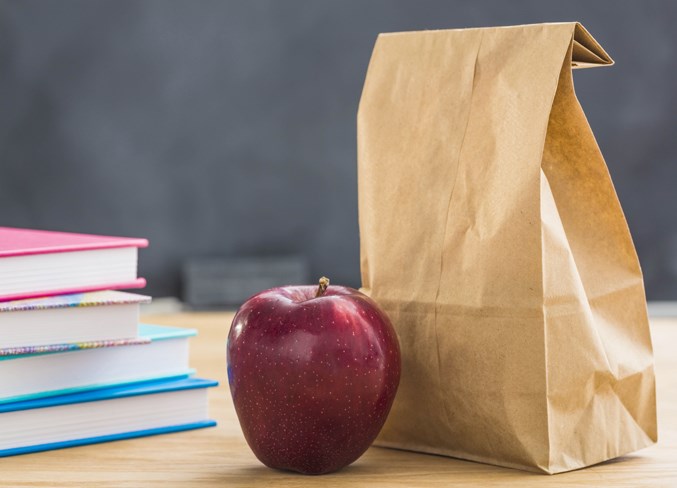As students head back to the classroom, it’s important for parents to consider how they can pack nutritious lunches to send along with their children. According to Nicole Ferguson, a certified holistic nutrition consultant with Simply for Life, a healthy meal gives students the energy they need to learn and get through the day.
“It keeps their blood sugar steady,” she said. “If they dip too low, they can experience that term we’ve heard – ‘hangry.’ They can get anxious and lose focus, get irritable, just like anyone else.”
Ferguson said it’s important to avoid sending kids to school with processed foods with lots of sugar and refined wheat – typically placed in the middle aisles of grocery stores – such as granola bars, cookies and cereal snacks. Those snacks will satiate students momentarily but lead to a blood sugar drop, causing students to feel shaky and unfocused.
According to Ferguson, parents may want to take extra time at the grocery store to check ingredient lists, as well. Specifically, she said to avoid products that have sugar and wheat indicated as the first ingredients, and to avoid products with lengthy ingredient lists.
“You ideally want to have one or two ingredients in your food,” Ferguson said.
Rather than packing heavily-processed bars in a brown bag, she said, parents can find a recipe to make homemade granola bars with better quality ingredients. The preparation of these snacks can even become a fun family activity.
“You can set some time aside earlier in the week to even get the kids involved making their own granola bars, so they have a connection to their food and it’s not just bought from an aisle in a grocery store,” Ferguson said, adding this may help students take ownership of their food and encourage them to actually eat what is packed.
Many parents may be familiar with the battle to get children to eat fruits and vegetables. If that’s the case, Ferguson recommended meeting kids halfway by preparing fruits and vegetables in a way that makes them more appetizing and appealing to kids.
Rather than sending a whole apple that will likely come home bruised and uneaten, she suggested cutting the apple into slices and sprinkling them with cinnamon, to add flavour and disguise any darkening that may occur throughout the day.
Parents can also offer a choice to students – for example, Ferguson said, send grapes or peaches, depending on what the student wants to eat that day.
Another tip, she added, is to purchase and roast a whole chicken for sandwiches, rather than buying additive-filled lunch meats from the deli.
“You really only have to put the chicken in the oven and it roasts itself for an hour, however long it takes,” Ferguson said. “Let it cool, debone it and have deboned chicken meat in the fridge. That can be made into a wrap or a sandwich, or [eaten]on its own.”
Ferguson acknowledged packing nutritious lunches can be more work for parents, and may be more expensive at the grocery store. However, she said she believes the benefits – such as reduced waste and better health impacts – make it worth it.
“A lot of hard work and money is coming back home or being thrown out at school,” Ferguson said. “You might as well invest a little time in the beginning and get some fresh foods. Get the kids involved, if they want to have some input. It can save some money in the long run, where kids are actually eating the lunches and it’s actually nourishing them and they’re feeling fuller until the end of the day.”




